[Kenny Sagawa’s Column] How to Avoid Wildlife-Related Accidents
- 16/09/2016
51 views
![20160907 sgw 001 680x521 - [Kenny Sagawa’s Column] How to Avoid Wildlife-Related Accidents](https://gc-img.webike.net/@wid-news/wp-content/uploads/2016/09/20160907_sgw_001-680x521.jpg)
[Webike News Chief Editor: Kenny Sagawa]
I was in Hokkaido two weeks in a row for a business trip and I experienced different transportation situations there from usual.
“Deer Warnings” are Essential When You’re Driving in Hokkaido
I hired a rent-a-car and unfamiliar parts were mounted on the back mirror.
There was a sticker in the car printed ”This Vehicle is Equipped with Deer Warning”. I looked it up and found out that all leading companies had installed their rent-a-cars in Hokkaido with “Deer Warning”. The movement started this spring in intention to avoid deers.
Hokkaido is rich in nature with many beautiful sightseeing spots that are popular to tourists. On the other hand tourists have a high risk of making contact with wild animals.
Especially accidental contact with large animals like Ezojika (Japanese Deer) cause great damage that may end up in crucial situations. The rent-a-car company faces around 30 accidents a year.
Especially accidental contact with large animals like Ezojika (Japanese Deer) cause great damage that may end up in crucial situations. The rent-a-car company faces around 30 accidents a year.
![20160907_sgw_02 20160907 sgw 02 680x510 - [Kenny Sagawa’s Column] How to Avoid Wildlife-Related Accidents](https://news.webike.net/wp-content/uploads/2016/09/20160907_sgw_02-680x510.jpg) *Deer Whistle that activates with wind pressure. |
![20160907_sgw_03 20160907 sgw 03 680x510 - [Kenny Sagawa’s Column] How to Avoid Wildlife-Related Accidents](https://news.webike.net/wp-content/uploads/2016/09/20160907_sgw_03-680x510.jpg) *Sticker showing the car is equipped with a Deer Whistle. |
Effects of the Deer Whistle
The Deer Warning activates with wind pressure. However sound frequencies are inaudible to human beings. Therefore the noise is effective to deers but will not disturb drivers. Deer Warnings are also used overseas and are common in Canada where there are luxuriant forests.
The sound of the whistle doesn’t threaten or terrify the deer, but makes them stop to reduce the risk of making contact.
Actually when you’re in Hokkaido an Ezo red fox will often come towards the car to get something to eat. When I was touring around the Shiretoko area some time ago, I was distressed by seeing a huge Ezojika (Japanese Deer) lying beside the road after being involved in an accident.
I have mixed feelings for development because building new roads means that the original sanctuary of wild animals is invaded by human beings.
Encountering a Wild Boar
I encountered a wild bore once, not in Hokkaido but on a winding road in Shizuoka Prefecture.
It was dawn and beginning to dim. I was on a super sports model to shoot for a magazine. I’d just slipped out of a curve and was accelerating at a straight when suddenly I saw a bundle roll out from the slope of the mountain.
First I thought they were falling rocks but soon realized that it was a herd of wild boars. I was so surprised, “my heart nearly leaped out of my mouth”.
I pushed on the brakes so hard I nearly made a forward roll and bumped into one of them.
There was quite a shock and it was difficult to control the handle but luckily I didn’t fall. The herd must have been a family. The one I hit was rather small and I’m glad I was able to avoid it slightly.
But what would have happened if it was a larger boar or a deer!? The image makes me shiver. By the way the boar family continued to cross the road and disappeared in the woods. I remember how I was amazed by strong wildlife.
When You’re Visiting Hokkaido, Take One as a Good-Luck Charm
Deer Warnings are not so expensive. You can purchase them for several hundred yens. They can easily be attached using double-sided tape and will be useful for motorcycles as well. Be sure to reduce speed when you see a “Beware of Wild Animals” sign and why not take one on your trip just to be on the safe side.









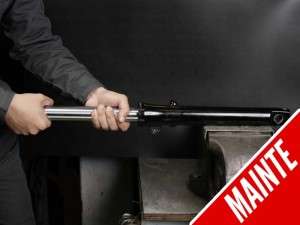
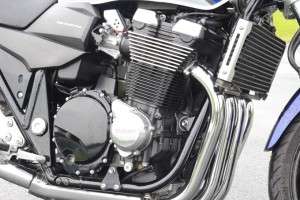
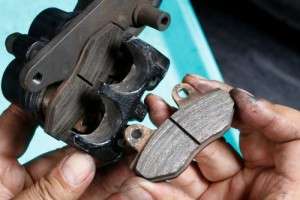


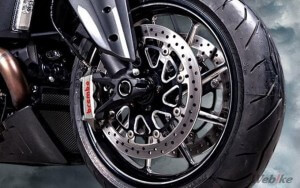
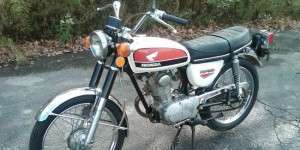









 Brake Disc](http://global-fs.webike-cdn.net/catalogue/images/84812/DIA320_BRAKE_DISC_KIT_KAWASAKI_01_s.jpg)
